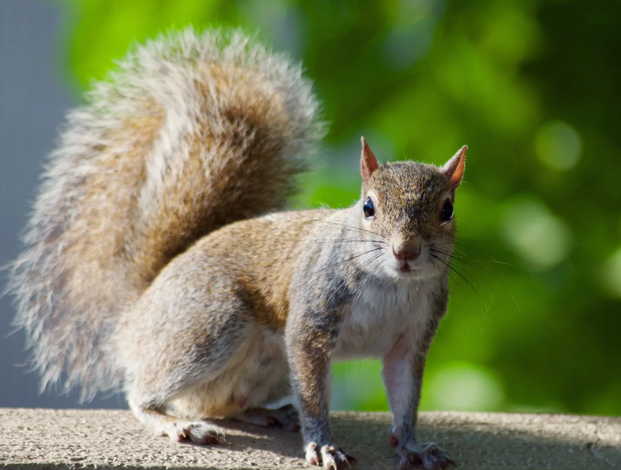Dealing with unwanted visitors in the form of rodents can be a frustrating and challenging experience for homeowners. Whether you’re facing a squirrel infestation or a rat problem, it’s crucial to take prompt action to safeguard your property and ensure the well-being of your family. In this comprehensive guide, we’ll explore effective strategies for squirrel removal and rat removal, helping you regain control over your living space.
Understanding the Problem: Squirrels and Rats
Squirrels and rats are two common rodents that can cause significant damage to your home and pose potential health risks. While squirrels may seem harmless at first glance, their relentless gnawing habits and nesting behavior can lead to costly repairs and structural issues. On the other hand, rats are notorious for their ability to spread diseases, contaminate food sources, and reproduce rapidly, making them a serious threat to your home’s safety.
Identifying Signs of Infestation
Before implementing any removal strategies, it’s essential to identify the telltale signs of a squirrel or rat infestation. Here are some common indicators to look out for:
Squirrel Infestation Signs:
Squirrel infestations can be challenging to detect initially, as these agile creatures are often active during the day and can go unnoticed. However, there are several telltale signs that can alert you to the presence of these furry intruders. One of the most common indicators is the discovery of gnaw marks on wooden structures, siding, or electrical wires. Squirrels have continuously growing incisors that they use to gnaw on various materials, causing significant damage over time.
Another clear sign of a squirrel infestation is the presence of nesting materials in your attic, walls, or other secluded areas. Squirrels are known for building elaborate nests using materials like twigs, leaves, insulation, and even shredded paper or cardboard. If you notice these materials accumulating in unexpected places, it could indicate that squirrels have taken up residence in your home.
Additionally, you may hear scratching, scurrying, or squeaking noises coming from the ceiling, walls, or attic spaces. These sounds are often indicative of squirrels moving around and nesting within the confines of your home. Finally, if you spot squirrels frequently entering or exiting your property through roof vents, chimneys, or other openings, it’s a clear sign that they have established a presence and are likely nesting within your home or building.
If you notice any of these signs, it’s crucial to take prompt action to address the squirrel infestation before it escalates and causes further damage or poses potential health risks.
Rat Infestation Signs:
Identifying the presence of rats in your home or property is crucial to address the issue promptly and prevent further damage or health risks. One of the most obvious signs of a rat infestation is the discovery of droppings. Rat droppings are typically dark, cylindrical in shape, and have blunt ends. Finding these droppings in pantries, cupboards, or along baseboards and walls is a clear indicator that rats are present.
Another telltale sign of rats is the presence of gnaw marks on various materials, including wood, plastic, and even electrical wires. Rats have continuously growing incisors that they use to gnaw on objects, often causing significant damage to structures and posing potential fire hazards if they chew through electrical wiring.
You may also notice greasy rub marks along walls or baseboards, which are caused by the oils and dirt on rats’ bodies as they travel along the same pathways. These rub marks can appear as dark, smudged lines and are a distinct sign of rat activity.
Unusual noises, such as scratching, scurrying, or squeaking sounds coming from wall cavities, crawl spaces, or attics, can also indicate the presence of rats. If you hear these noises, especially at night when rats are most active, it’s a strong indication that they have taken up residence in your home or building.
If you observe any of these signs, it’s essential to take immediate action to address the rat infestation, as rats can pose serious health risks and cause extensive damage to your property if left unchecked.
Squirrel Removal Strategies
Once you’ve identified a squirrel infestation, it’s time to take action. Here are some effective strategies for squirrel removal:
- Exclusion and Sealing Entry Points: The most effective long-term solution is to prevent squirrels from entering your home in the first place. Seal off any potential entry points using durable materials like galvanized mesh, caulk, or steel wool. Pay special attention to areas around chimneys, vents, and roof eaves.
- Trapping and Relocation: Live traps can be used to humanely capture squirrels that have already made their way into your home. Once trapped, you can safely relocate them to a suitable natural area away from residential areas. Be sure to check local regulations regarding wildlife relocation.
- Deterrents and Repellents: Various deterrents and repellents can be employed to discourage squirrels from entering or nesting on your property. Ultrasonic devices, motion-activated sprinklers, and strong-smelling repellents like capsaicin or garlic can be effective in driving squirrels away.
- Habitat Modification: Making your property less appealing to squirrels can help deter them from settling in. Remove any potential food sources like bird feeders or accessible trash cans, and trim overhanging tree branches to discourage access to your roof or attic.
Rat Removal Strategies
Dealing with a rat infestation requires a comprehensive approach to eliminate the existing population and prevent future infestations. Here are some effective rat removal strategies:
- Seal Entry Points: Rats can squeeze through incredibly small openings, so it’s crucial to seal off any potential entry points around your home using durable materials like caulk, steel wool, or concrete. Pay close attention to areas around pipes, vents, and electrical lines.
- Eliminate Food Sources: Rats are attracted to areas with readily available food sources. Store food in airtight containers, promptly dispose of any spilled or leftover food, and maintain a clean and clutter-free environment to discourage rat activity.
- Trapping and Baiting: Setting up humane live traps or snap traps can be an effective way to capture and remove rats from your premises. Baits can also be used in conjunction with traps to lure rats into the trap’s path. However, exercise caution when using baits, especially if you have pets or children in the area.
- Professional Pest Control Services: In cases of severe or persistent rat infestations, it may be necessary to seek the assistance of professional pest control experts. They have the expertise and specialized equipment to handle large-scale rat removal effectively and efficiently.
Prevention and Ongoing Maintenance
Once you’ve successfully removed squirrels or rats from your home, it’s crucial to implement preventive measures to discourage their return and maintain a rodent-free environment.
- Regular Inspections: Conduct regular inspections of your home’s exterior and interior to identify any potential entry points or signs of new infestations. Address any issues promptly to prevent further problems.
- Maintain Cleanliness: Keep your home clean and free of clutter, as well as any spilled food or accessible water sources that could attract rodents.
- Trim Vegetation: Regularly trim trees, shrubs, and vegetation around your home to eliminate potential nesting sites and discourage access to your roof or attic.
- Install Deterrents: Consider installing humane deterrents like motion-activated sprinklers, ultrasonic devices, or predator urine around your property to discourage rodents from entering or nesting.
Conclusion
Dealing with squirrel removal and rat removal can be a challenging task, but with the right strategies and perseverance, you can regain control over your living space. Remember, prevention is key to avoiding future infestations. By implementing the techniques outlined in this comprehensive guide, you can effectively eliminate these unwanted guests and create a safe, pest-free environment for your family. If the infestation persists or becomes too overwhelming, don’t hesitate to seek professional assistance from experienced wildlife control experts. With patience and a proactive approach, you can successfully protect your home from the destructive habits of squirrels and rats.



